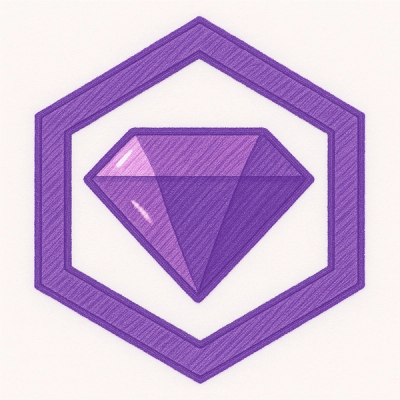daru - Data Analysis in RUby




Introduction
daru (Data Analysis in RUby) is a library for storage, analysis, manipulation and visualization of data in Ruby.
daru makes it easy and intuitive to process data predominantly through 2 data structures:
Daru::DataFrame and Daru::Vector. Written in pure Ruby works with all ruby implementations.
Tested with MRI 2.5.1 and 2.7.1.
daru plugin gems
daru-view is for easy and interactive plotting in web application & IRuby
notebook. It can work in any Ruby web application frameworks like Rails, Sinatra, Nanoc and hopefully in others too.
Articles/Blogs, that summarize powerful features of daru-view:
This gem extends support for many Import and Export methods of Daru::DataFrame. This gem is intended to help Rubyists who are into Data Analysis or Web Development, by serving as a general purpose conversion library that takes input in one format (say, JSON) and converts it another format (say, Avro) while also making it incredibly easy to getting started on analyzing data with daru. One can read more in SciRuby/blog/daru-io.
Features
- Data structures:
- Vector - A basic 1-D vector.
- DataFrame - A 2-D spreadsheet-like structure for manipulating and storing data sets. This is daru's primary data structure.
- Compatible with IRuby notebook, statsample, statsample-glm and statsample-timeseries.
- Support for time series.
- Singly and hierarchically indexed data structures.
- Flexible and intuitive API for manipulation and analysis of data.
- Easy plotting, statistics and arithmetic.
- Plentiful iterators.
- Optional speed and space optimization on MRI with NMatrix and GSL.
- Easy splitting, aggregation and grouping of data.
- Quickly reducing data with pivot tables for quick data summary.
- Import and export data from and to Excel, CSV, SQL Databases, ActiveRecord and plain text files.
Installation
$ gem install daru
Notebooks
Notebooks on most use cases
Visualization
Notebooks on Time series
Notebooks on Indexing
Case Studies
Blog Posts
Time series
Categorical Data
Basic Usage
daru exposes two major data structures: DataFrame and Vector. The Vector is a basic 1-D structure corresponding to a labelled Array, while the DataFrame - daru's primary data structure - is 2-D spreadsheet-like structure for manipulating and storing data sets.
Basic DataFrame intitialization.
data_frame = Daru::DataFrame.new(
{
'Beer' => ['Kingfisher', 'Snow', 'Bud Light', 'Tiger Beer', 'Budweiser'],
'Gallons sold' => [500, 400, 450, 200, 250]
},
index: ['India', 'China', 'USA', 'Malaysia', 'Canada']
)
data_frame

Load data from CSV files.
df = Daru::DataFrame.from_csv('TradeoffData.csv')

Basic Data Manipulation
Selecting rows.
data_frame.row['USA']

Selecting columns.
data_frame['Beer']

A range of rows.
data_frame.row['India'..'USA']

The first 2 rows.
data_frame.first(2)

The last 2 rows.
data_frame.last(2)

Adding a new column.
data_frame['Gallons produced'] = [550, 500, 600, 210, 240]

Creating a new column based on data in other columns.
data_frame['Demand supply gap'] = data_frame['Gallons produced'] - data_frame['Gallons sold']

Condition based selection
Selecting countries based on the number of gallons sold in each. We use a syntax similar to that defined by Arel, i.e. by using the where clause.
data_frame.where(data_frame['Gallons sold'].lt(300))

You can pass a combination of boolean operations into the #where method and it should work fine:
data_frame.where(
data_frame['Beer']
.in(['Snow', 'Kingfisher','Tiger Beer'])
.and(
data_frame['Gallons produced'].gt(520).or(data_frame['Gallons produced'].lt(250))
)
)

Plotting
Daru supports plotting of interactive graphs with nyaplot. You can easily create a plot with the #plot method. Here we plot the gallons sold on the Y axis and name of the brand on the X axis in a bar graph.
data_frame.plot type: :bar, x: 'Beer', y: 'Gallons sold' do |plot, diagram|
plot.x_label "Beer"
plot.y_label "Gallons Sold"
plot.yrange [0,600]
plot.width 500
plot.height 400
end

In addition to nyaplot, daru also supports plotting out of the box with gnuplotrb.
Documentation
Docs can be found here.
Contributing
Pick a feature from the Roadmap or the issue tracker or think of your own and send me a Pull Request!
For details see CONTRIBUTING.
Acknowledgements
- Google and the Ruby Science Foundation for the Google Summer of Code 2016 grant for speed enhancements and implementation of support for categorical data. Special thanks to @lokeshh, @zverok and @agisga for their efforts.
- Google and the Ruby Science Foundation for the Google Summer of Code 2015 grant for further developing daru and integrating it with other ruby gems.
- Thank you last.fm for making user data accessible to the public.
Copyright (c) 2015, Sameer Deshmukh
All rights reserved















